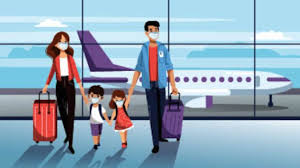Domestic air passenger traffic rose 4.4% in May compared to last year, data released by the civil aviation regulator Directorate General of Civil Aviation (DGCA) stated on Friday. According to the DGCA, the domestic airlines flew over 13.7 million passengers last month compared to 13.2 million in May last year.
Introduction
The Indian aviation sector is witnessing a steady recovery post-pandemic, with domestic air passenger traffic showing a significant increase. In May, domestic airlines transported over 13.7 million passengers, marking a 4.4% rise compared to the same period last year. This growth underscores the sector’s resilience and the increasing confidence of passengers in air travel.
Overview of DGCA Data
Passenger Traffic Growth
The DGCA data highlights a notable growth in passenger traffic. With over 13.7 million passengers in May, this is a clear indication that air travel is regaining its momentum. This growth can be attributed to several factors, including easing travel restrictions, increased vaccination rates, and a rise in leisure and business travel.
Comparative Analysis
When we compare the figures from May last year, which stood at 13.2 million passengers, the 4.4% increase is a positive sign. It reflects the gradual return to pre-pandemic levels and the robust demand for domestic air travel.
Factors Contributing to the Increase
Easing of Travel Restrictions
One of the primary factors contributing to the rise in passenger traffic is the easing of travel restrictions. As COVID-19 cases decline and restrictions are lifted, more people are willing to travel by air.
Increased Vaccination Rates
The increase in vaccination rates has played a crucial role in boosting passenger confidence. With more people vaccinated, there is a greater sense of safety and willingness to travel.
Growth in Leisure and Business Travel
The demand for both leisure and business travel has seen a surge. After months of restrictions, people are eager to travel for vacations, and businesses are resuming in-person meetings and conferences.
Impact on Domestic Airlines
Operational Challenges
While the increase in passenger traffic is a positive sign, it also presents operational challenges for airlines. Managing the surge in demand while ensuring safety and compliance with regulations requires efficient planning and execution.
Revenue Boost
The rise in passenger numbers translates to a revenue boost for domestic airlines. Increased ticket sales and ancillary revenues from services like baggage fees and in-flight sales contribute to the financial recovery of airlines.
Airlines Performance Breakdown
Leading Airlines
Leading airlines such as IndiGo, SpiceJet, and Air India have reported higher passenger loads. IndiGo, being the market leader, has particularly benefitted from the increased demand, maintaining its dominance in the domestic market.
Load Factors
Load factors, which indicate the percentage of available seats filled by passengers, have also seen an improvement. Higher load factors are a sign of better capacity utilization and operational efficiency.
Passenger Experience and Feedback
Improved Services
Airlines have been working on improving passenger experience by enhancing in-flight services, ensuring timely departures and arrivals, and maintaining cleanliness and hygiene standards.
Passenger Feedback
Feedback from passengers has been largely positive, with many appreciating the efforts taken by airlines to ensure a safe and comfortable travel experience.
Future Outlook for Domestic Air Travel
Sustained Growth
The future outlook for domestic air travel appears promising. With continued economic recovery, the demand for air travel is expected to sustain and grow further.
Expansion Plans
Airlines are also planning to expand their fleets and add new routes to cater to the growing demand. This expansion is likely to enhance connectivity and provide more travel options to passengers.
The 4.4% rise in domestic air passenger traffic in May is a testament to the resilience and recovery of the Indian aviation sector. As travel restrictions ease and vaccination rates increase, more people are taking to the skies. This growth not only benefits the airlines but also contributes to the overall economic recovery. The future looks promising for domestic air travel, with continued growth and expansion on the horizon.








